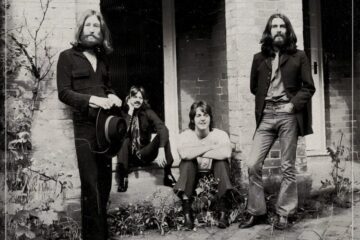Some songwriters devote weeks to individual tracks, poring over instruments and lyrics, desperately flicking through thesauruses, ordering and reordering their lines to capture their vision at its purest. For Paul McCartney, it was rarely this exhaustive. His knack for pairing words with melody was so well-honed that he could quite literally pen songs in his sleep – ‘Yesterday’ came to him in a dream.
Sometimes, McCartney even claimed that the songs wrote themselves. This was the case with 1965’s sitar-infused tale of adultery, ‘Norwegian Wood (This Bird Has Flown)’, which featured on Rubber Soul. The initial idea for the lyrics came from John Lennon, who penned the opening lines: “I once had a girl, or should I say she once had me.” It’s a striking opening line, one that McCartney would build upon with his own contributions.
When Lennon presented this line to his songwriting partner, McCartney was immediately taken in by the concept. Though they had just one line to go off, he suggested that the song then “wrote itself” in Barry Miles’ biography Many Years From Now. “Once you’ve got the great idea,” he explained, “they do tend to write themselves, providing you know how to write songs.”
And if there’s one person who knows how to write songs, it’s McCartney. Running with Lennon’s starting lyric, the bass player expanded upon the story of ‘Norwegian Wood’, creating a visually striking second verse. “I sat on the rug,” the story goes, “biding my time, drinking her wine.” But his sultry imagery and the affair between the two quickly devolve into chaos.
Waking up in the bath, McCartney and Lennon’s protagonist is shocked to find that the “bird” – or the woman he sat beside on the rug – “has flown”. In retaliation to this rejection, he sets fire to the Norwegian wood that lines the walls, a style that was in trend at the time of writing. “It could have meant I lit a fire to keep myself warm, and wasn’t the decor of her house wonderful?” McCartney explained, “But it didn’t, I meant I burned the fucking place down as an act of revenge…”
As twinkling sitar soundscapes surround Lennon’s words, the song tricks you into thinking that its story is a light-hearted one, when actually it charts adultery and arson. The easy flow of the songwriting process comes across in the final product, as the song seamlessly moves from devotion to late-night talks to pyrotechnic destruction. It’s a simple story bolstered by vivid imagery, double meanings and an element of shock value.
“Isn’t it good, Norwegian wood?” the song ends, fading into those final twangs, and it’s difficult not to agree. A tiny, two-minute track that seems intricately crafted by the iconic duo was shrugged off by McCartney as quite simply “writing itself”, going on to become one of the most vivid and intriguing works in their entire discography.
While ‘Norwegian Wood’ is a song that would take most people weeks or months to replicate, McCartney and Lennon had such well-honed songwriting skills, separately and collaboratively, that the song simply flowed from their pens. It remains a staple in The Beatles’ catalogue over half a century later and even inspired the title of a Haruki Murakami novel.




